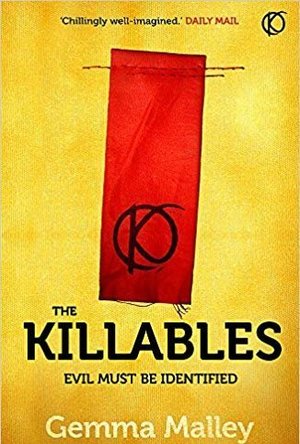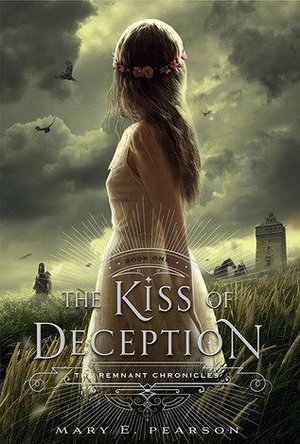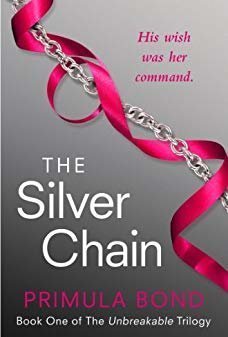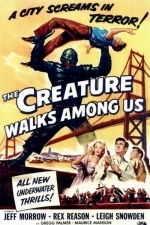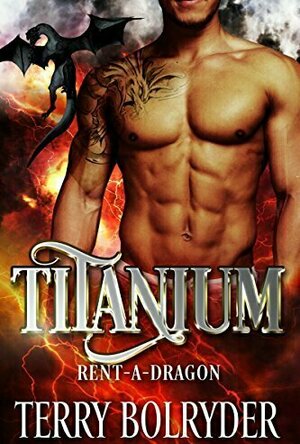Eleanor Luhar (47 KP) rated The Killables. Gemma Malley in Books
Jun 24, 2019
So, the plot. Evie thinks she's evil, doomed to be reconditioned. She has dreams that must be caused by her evilness, and even meets up secretly with her matched one's brother.
The city Evie lives in is supposed to be safe, with no evil. But when her lover, Raffy, is destined to become a K, Evie knows something is wrong. His brother, Lucas, who once seemed so harsh and cold, is now the one helping Evie and Raffy escape. What if everything she had thought about him was wrong?
Beyond the city walls, Raffy and Evie meet Linus. He reveals the truth about the New Baptism, about the effects of the operation - how removing the amygdala does not only remove evil but humanity itself. They devise a plan to overcome the System as it is and return it to its original design.
I love the plot of this, and it's fantastically written. It's exciting and unexpected and really easy to read. But the love triangle... Why... Why does every YA book have one?! Why can't Evie just be in love with one brother and leave it at that?! Meh.
I am soon to read the rest of this trilogy, and will be posting my reviews on those too. But I do really like Gemma Malley, and would certainly recommend reading some of her books.
As for this particular novel, I'm going to rate it 4 stars out of 5. Exciting and thrilling, but not perfect.
Natacha (374 KP) rated The Kiss of Deception (The Remnant Chronicles #1) in Books
Jun 29, 2019
This was an easy and interesting read. We have a strong female main character and we see that through her actions and not just because the author tells us so.
Things that I liked:
-Lia. She is strong, stubborn and she cares a lot about her friends.
-The mystery of who is the assassin and who is the prince. I thought that was a nice idea, it kept me guessing for a little but if you pay attention to a couple of details you'll guess who is who.
-Love triangle. Yes, that's an unpopular opinion but well-done love triangles are my guilty pleasure.
-Lia's actions have consequences that she needs to deal with.
Things I didn't like:
-This is the first of a trilogy so this was mostly to get to know the characters. The majority of the book is Lia getting on with her new life in Terravin and getting to know Kaden and Rafe, and falling in love. So not too much action.
Worth mentioning:
-If you like complex magic systems in your fantasy book this is not it. There is not magic as see in epic fantasy. The gift that some people have in the book, is another way to say that they are some kind of psychic. They can see into the past and future, sometimes with the help of the dead. And that's all we get magic wise., so don't go in expecting complex magic systems.
Leanne Crabtree (480 KP) rated The Silver Chain (The Unbreakable Trilogy, #1) in Books
Sep 6, 2019
When I was offered this it was described as being like 50 Shades of Grey and the Crossfire series. Having liked both of these I thought Id give it a go. In a way it was like them: young girl meets wealthy business man and cant deny the sexual attraction. Unfortunately for me, it didnt quite measure up. It didnt draw me in straight away.
In fact, it took me a while to get into it. That might have been down to Gustavs attitude and the fact he wasnt very good at explaining what he wanted. It put me off a bit, I guess, and I couldnt always understand the attraction. Serena, too, was a bit of a puzzle. The way she reacted sometimes; though that could probably be put down to her age.
After finishing the story Ive been left with some questions. Why wouldnt Gustav kiss her until near the end? Why did he with-hold from having sex with her for so long? What sort of lifestyle were Gustav and his wife involved with before? And why were Serenas parents so horrible to her?
I suppose since this is the first in the trilogy that we will get answers to some of these in the following books. If Im honest, Im not sure if Id be interested in continuing the series, though that ending has most definitely whetted my appetite.
Overall it was a god story that kept me wondering where it was heading but for me, having read 50 Shades and the Crossfire series, it just didnt quite do it for me.
That being said, dont dismiss a book without at least trying it for yourself first.
Andy K (10823 KP) rated The Creature Walks Among Us (1956) in Movies
Sep 22, 2019
The beast is badly burned in a freak fire accident, but afterwards begins to transform. He sheds his webbed appendages and facial gills and starts to look more human and less like a fish. He also can no longer breathe underwater and appears to be becoming more aware of the world around him.
Meanwhile, the doctor's wife is having a rough time of her situation having to deal with not only her abusive husband, but the unwanted advances of other men. Events come to a boiling point among the love triangle and the beast appears to have gotten the blame for something he didn't do.
Aware of the situation he lashes out again for his very survival.
I liked this film better than "Revenge of the Creature", but both films are far inferior to the original classic. Having the creature change so he could walk on land was not a good idea since his ability to swim around and sneak up on the tourists was one of his most endearing qualities!
His transformed look was also a step down from his original appearance. His more human look reminded me of the way Louis Gossett Jr. looked in the movie "Enemy Mine". They may have been trying for something different, especially since this was the 3rd Creature film in 3 years, but it was largely not successful.
Not sure why they chose to have another love scandal either. Why not just focus on the creature and doing something there rather than something you've seen 1000 times before?
Lyndsey Gollogly (2893 KP) rated Titanium (Rent-a-Dragon #3) in Books
Aug 6, 2020
Kindle
Titanium ( Rent a Dragon book 3)
By Terry Bolryder
A dragon contractor? Expensive.
Unless you're the woman Titus Kroll just fell madly in love with. As a decisive, capable, and newly awakened metal dragon, Titus is used to seeing what he wants and going after it. Right now that's Bree Durell, a sweet, curvy woman who needs help with her house badly and can't afford to pay. Still, his heart says she's his mate, and no matter the price, he's ready to serve her every need, whether that's repairing her home, healing her heart, or restoring her trust.
Bree Durell isn't looking for romance. She has enough on her plate with a crazed stalker, a clumsy but adorable dog, and a house that's falling apart around her and too expensive to repair. Though there is instant attraction when she sees Titus in all his tall, blue-eyed, muscular glory at Rent-A-Dragon, she's sure she can't afford his fee. So when Titus shows up on her doorstep with an offer she can't refuse, she vows she will only keep things professional, no matter how wickedly talented he might be with his hands.
As Titus and Bree work in close quarters, sharing a home and a few steamy encounters, there are big threats circling. From an ancient friend-turned-enemy, to rogue dragons obsessed with vengeance, Titus is going to have his hands full if he wants to protect his newly-built life.
The last book in this trilogy and we finally see our last brother mated! Titus is my favourite I think. Another short story giving us more shifter fun! Nice to see the precious metal dragons finding some truth and ready to be trained and hopefully find their mates too!
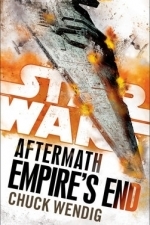
Star Wars: Aftermath: Empire's End
Book
Following Star Wars: Aftermath and Star Wars: Life Debt, Chuck Wendig delivers the exhilarating...
Science fiction
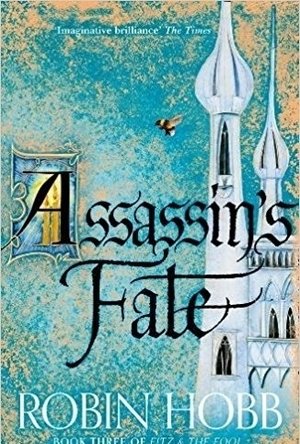
Assassin's Fate
Book
The much-anticipated final conclusion to the Fitz and the Fool trilogy. Prince FitzChivalry...
Science fiction
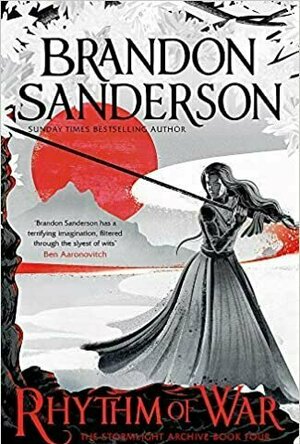
Rhythm of War
Book
The Stormlight Archive saga continues in Rhythm of War, the eagerly awaited sequel to Brandon...
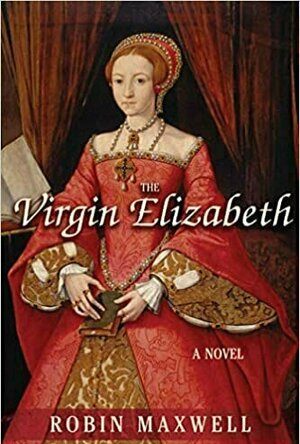
The Virgin Elizabeth: A Novel
Book
A book of passion, of sixteenth-century England, of greed and political ambition unto death....
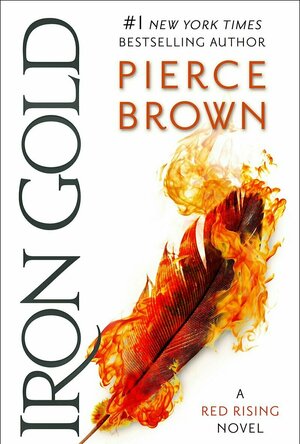
Iron Gold: Book 4 of the Red Rising Saga
Book
#1 New York Times bestselling author Pierce Brown expands the size and scope of his Red Rising...
science fiction
